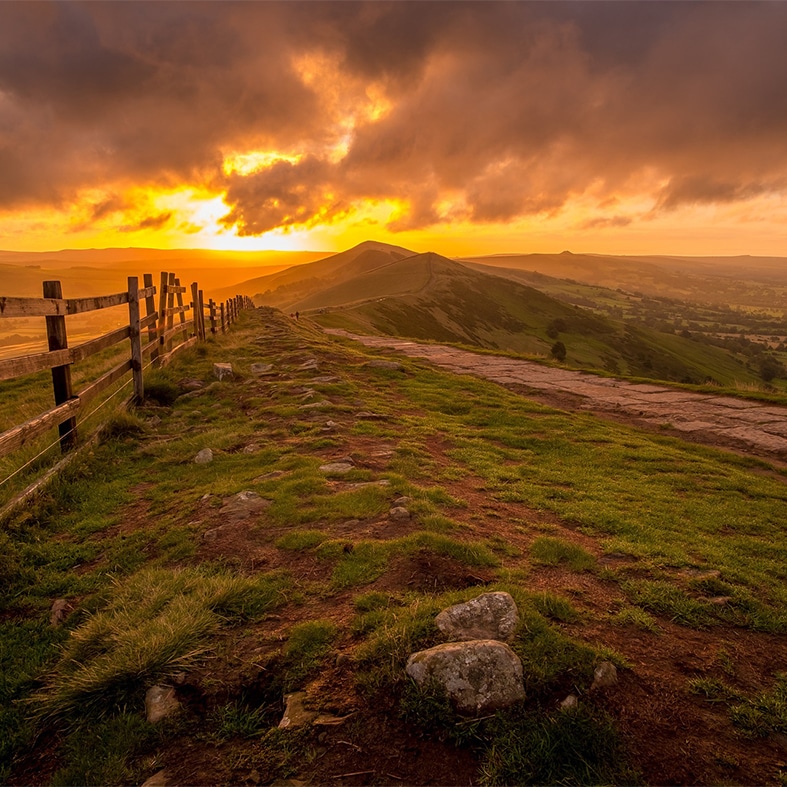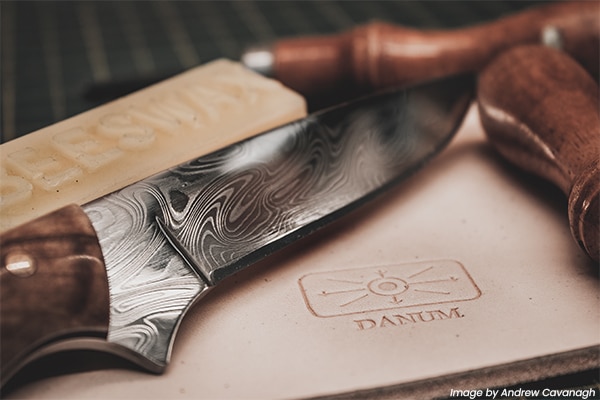
Scottish knife law
Information regarding Scottish knife and offensive weapon laws, including penalties should you break the law.
Get information on the legal shooting season for mammals and birds in the UK.
Apply for funding for your project or make a donation today
Comprehensive information and advice from our specialist firearms team.
Everything you need to know about shotgun, rifle and airgun ammunition.
Find our up-to-date information, advice and links to government resources.
Everything you need to know on firearms law and licensing.
All the latest news and advice on general licences and how they affect you.


Home » Firearms » Firearms use » Shooting -rights of way and access (England and Wales)
As shooting is an activity that occurs in places where the public often have a right of access, we have looked carefully at the legislation specific to shooting near or over public rights of way.
The interpretation of authority to use firearms on land with public rights of way and in public places often leads to confusion for everyone.
BASC advises that discretion be used where shooting needs to take place and where a public right of way exists. All persons participating in any shooting activity must recognise that users of public rights of way have the right to pass and repass.
One should refrain from shooting when a right of way is being used as this could be construed as a common law nuisance, wilful obstruction or a breach of Health and Safety at Work etc Act 1974.
Rights of way fall into two categories, public rights of way and private rights of way.
Highways are a way in which the public have the right to pass and re-pass by foot, on horseback or with vehicles. Bridleways, footpaths and metalled roads (carriageways) are all examples of highways.
Carriageways are a way constructed or comprised in a highway (other than a cycle track) over which the public have a right of way by foot, on horseback or with vehicles.
Bridleways are a highway over which the public has a right of way on foot, on horseback or leading a horse. There is also a right to use a pedal cycle on a bridleway providing the cyclist gives way to pedestrians and riders.
Private rights of way fall into two categories, the first being for the benefit of a landowner in respect of accessing his own land via someone else’s and where public access is restricted and the second being ‘permissive paths’.
Permissive paths are paths and tracks that are not public rights of way. There is no statutory right to use them, and they are not covered by rights of way legislation. Often there will be a notice at either end of the route explaining this and setting out any conditions the owner has set. You may find, for example, that use is restricted to daylight hours, that dogs are banned entirely, or that the path may be moved or closed at certain times.
In England and Wales it is an offence without lawful authority or reasonable excuse to discharge any firearm within 50 feet of the centre of a highway, which consists of or comprises a carriageway, and in consequence a user of the carriageway is injured, interrupted or endangered. [Section 161(2) of the Highways Act 1980 as amended].
It is important to remember that the discharge of a firearm is not prohibited in itself. It must also be proved that there was an injury, or that someone’s passage was interrupted or interfered with, eg. they have been forced to make a detour.
For the purposes of Section 161 (2) of the Highways Act 1980 (as amended), a ‘highway’ is restricted to a public right of way for the passage of vehicles and does not include footpaths, cycle tracks or bridleways. Therefore, the 50 feet rule described above does not apply to rights of ways that cross private lands e.g. footpaths.
While the Firearms Act does not provide a statutory definition of what is meant by “lawful authority” or “reasonable excuse”, we believe that “lawful authority” would not necessarily apply to recreational shooters as this seems to relate to those issued with firearms in connection with official duties such as police or military personnel.
“Reasonable excuse” would apply to recreational shooters shooting over land with permission. Section 19 of the Firearms Act with regard to having a ‘firearm in a public place’ also applies and is described on page four. This legislation applies to all public places and not just open access land.
When the footpath runs across private land the ownership of the land and sporting rights are unaltered.
Therefore, a person with the shooting/sporting rights may shoot on or over footpaths on their land equally to public having the right to walk (to pass and re-pass) along it as a means of communication. So, the public and the shooters have a concurrent right to the footpath and it is up to both parties to not obstruct the other.
However, if you shoot over footpaths, only do so if you have permission to drop shot over the land on the other side. To fire a bullet or shot onto land that you have no right to shoot into or over is ‘constructive trespass’. Whilst this is a civil matter BASC strongly advises not to do this. It is also a basic safety precaution not to shoot into cover where you cannot be sure what your projectile(s) will hit.
It is especially important to apply this when shooting near footpaths obscured by hedges or foliage. It is good practice to only shoot across footpaths where you can see approaching users from a long way off and be certain you will not cause danger or alarm.
Please note that in the case of air weapons it is a criminal offence to fire an air pellet outside the boundary of your permitted premises. If you shoot from a path situated on somebody else’s land (regardless of who owns the rights to shoot on the land you are shooting into) it is taken to be armed trespass which is a criminal offence.
If a member of public is using a public right of way that crosses or is in the vicinity of your shoot or drive, the member of public has the right to pass and re-pass along the right of way without hindrance. Therefore, any shooting should be refrained from until they are at a distance where your activity should not cause any concern. This is particularly important if a bridleway is in use as a horse rider could be endangered by a startled horse.
If a member of public approaches a path/bridleway a method for ceasing to shoot should be in place. One example of a proven method is: A member of the shoot should be positioned at either end of the route (where appropriate) and shooting area to keep a watch for users of the right of way.
When a person is seen approaching on the right of way the following action should then be taken. The ‘watcher’ should sound a horn, whistle etc to stop the drive, this person should request that the rider or person(s) on foot wait. All guns should then unload, and have their guns broken in the safest position pointing to the ground, then the person is able to continue to use the right of way.
Persons using a right of way are prohibited from loitering or using it for purposes other than a reasonable use. If a person strays from a path, then only ‘civil trespass’ would apply (see below). However, if a person commits ‘aggravated trespass’ (see page four), ie. to disrupt your course of business or lawful activity, the police may be called.
In difficult circumstances it is sensible to call the police before the potential “activist” calls the police with a malicious allegation against you. Additionally, if a person uses a footpath to disrupt lawful activities they are also viewed as trespassers.
In the case of Harrison Vs The Duke of Rutland (1893). Harrison had used a footpath to disrupt the Duke’s grouse shoot by waving a handkerchief and opening and closing his umbrella. It was held that even though Harrison had remained on the footpath he was still a trespasser because of his actions in attempting to disrupt the shoot.
It is also an offence to discharge a firearm in any street so as to obstruct, annoy or endanger residents or passers-by. The word “Street” is defined to include any road, alley, court, square, thoroughfare or public passage. [Section 28 of the Town Police Clauses Act 1847]. NB: It is not clear whether this definition extends to footpaths or bridleways within towns as no court has been asked to clarify this point.
Civil trespass is simply a person entering property where they do not have the right to be, or property where they have been given permission to be but have subsequently been asked to leave.
An occupier may use reasonable force to remove a person from premises and anyone, including the police, may assist the occupier with this.
Civil trespass is not a criminal matter for the police. Prosecutions may only take place if a landowner chooses to prosecute the person privately in court.
It is an offence to enter any building, part of a building or land (including land covered by water) with a firearm without reasonable excuse (the proof whereof lies on the person). [Section 20 Firearms Act 1968] AGGRAVATED TRESPASS (DISRUPTION OF LAWFUL SHOOTING ACTIVITIES)
Criminal Justice and Public Order Act 1994 Section 68 provides for the offence of Aggravated Trespass.
A person shall be guilty of an offence if he trespasses on land (including buildings – Section 59, AntiSocial Behaviour Act 2003) with the intention of disrupting or obstructing a lawful activity. This includes intimidating another person so as to deter him from engaging in a lawful activity.
Section 69 empowers the police to direct aggravated trespassers to leave the land. This includes circumstances where the police believe a person is about to commit the offence of aggravated trespass or intimidation. If the person directed fails to leave the land as soon as practicable or having left the land as a trespasser reenters the land within three months from the day a direction was given they commit an offence.
Section 42 of the Countryside and Rights of Way Act 2000 provides for other Acts of Parliament to apply to open access land. This section relates to things done, or omitted to be done, in public places or other places to which the public have access.
For the purposes of shooting these are:
The British Association for Shooting and Conservation raised concerns with Defra, on behalf of its members, that allowing sections 19 and 47 of the Firearms Act to apply to all land mapped as ‘open access land’ might lead members of the public to misunderstand the scope of the provisions and contact the police. A possibility also exists that some members of the public opposed to shooting activities might make malicious complaints under section 19.
Section 47 of the Firearms Act makes provision for a constable to examine firearms and ammunition if he has cause to suspect a person of having a firearm, with or without ammunition, with him in a public place; or to be committing or about to commit, elsewhere than in a public place, an offence relevant to the purposes of the rest of Section 47.
The police are undoubtedly and rightly able to ‘stop and search’ individuals if they suspect an offence has or is about to be committed and for no other reason. Although it is not a legal requirement to carry your firearm or shotgun certificate whilst shooting, it is especially advisable to do so (or to carry a copy) when shooting on ‘open access land’ to avoid your firearms being seized if stopped by police.
If you believe the police to have acted illegally or improperly, a complaint should be directed to the chief officer of police for the force concerned or sent to the Independent Police Complaints Commission (IPCC), giving brief details and a statement of the exact complaint. Additional information about disruption of shoots by demonstrators can be viewed on the BASC website www.basc.org.uk.
Got a question? Email us on firearms@basc.org.uk or call 01244 573 010.
© BASC June 2023

Information regarding Scottish knife and offensive weapon laws, including penalties should you break the law.

BASC’s medical panel provides a speedy resolution to members who are being let down and delayed by unhelpful GPs during the firearms licensing process.

Our guide to carrying knives for use in the field, including country-specific information, choosing the right knife for you and prohibited weapons.
Sign up to our weekly newsletter and get all the latest updates straight to your inbox.
© 2025 British Association for Shooting and Conservation. Registered Office: Marford Mill, Rossett, Wrexham, LL12 0HL – Registered Society No: 28488R. BASC is a trading name of the British Association for Shooting and Conservation Limited which is authorised and regulated by the Financial Conduct Authority (FCA) under firm reference number 311937.
BASC Direct Ltd is an Introducer Appointed Representative of Agria Pet Insurance Ltd who administer the insurance and is authorised and regulated by the Financial Conduct Authority, Financial Services Register Number 496160. Agria Pet Insurance is registered and incorporated in England and Wales with registered number 04258783. Registered office: First Floor, Blue Leanie, Walton Street, Aylesbury, Buckinghamshire, HP21 7QW. Agria insurance policies are underwritten by Agria Försäkring.
If you have any questions or complaints about your BASC membership insurance cover, please email us. More information about resolving complaints can be found on the FCA website or on the EU ODR platform.